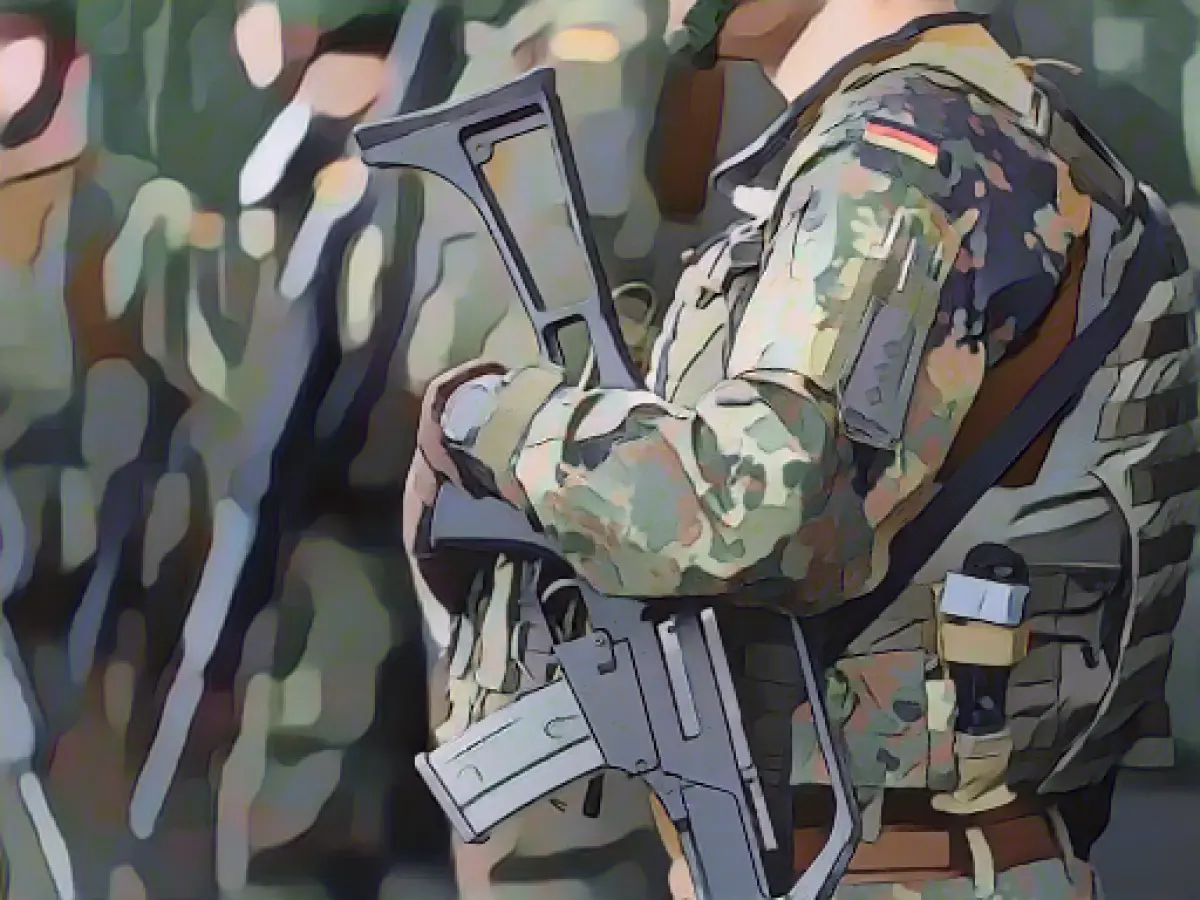Researchers: Bundeswehr on a par with the British and French
Conflict researchers consider the Bundeswehr to be roughly on a par with the armed forces of the two most important NATO allies in Europe in terms of equipment and operational readiness.
"Contrary to all claims, the Federal Republic of Germany is not incapable of defending itself and maintains armed forces comparable to those of France and Great Britain, which are generally considered to be more operational and more powerful, in terms of armament, personnel strength (and the resources required for this) and operational readiness," according to a study by the Bonn International Center for Conflict Studies (BICC). This was made available to the German Press Agency in Berlin.
The scientists evaluated publicly available data from the past three decades on behalf of Greenpeace. They conclude: "Overall, the Bundeswehr's main weapon systems are actually significantly more modern than those of its two NATO partners." Their core thesis: "The Bundeswehr has neither been cut back nor is Germany unable to make a comparable contribution to alliance defense as the two permanent members of the UN Security Council."
Armament
Overall, France has the most large weapon systems, ahead of Germany and the UK, but above all more smaller armored vehicles. With an average age of less than 20 years, German land systems are on average seven years younger than those of France and almost ten years younger than those of the United Kingdom. With the Leopard 2, Germany not only has the most, but also the most modern main battle tank.
France has the largest air force in terms of numbers (664 combat aircraft, combat helicopters, tanker and transport aircraft and transport helicopters). Germany is well behind with 477 units, but clearly ahead of the UK (346). Conclusion: "Overall, we therefore assume that the efficiency of Germany and France in terms of armament is similar, while the United Kingdom - with its very outdated land weapon systems - performs somewhat worse."
Personnel
According to the latest data from the "Military Balance" yearbook published by the International Institute for Strategic Studies (IISS/2023), France ranked first in 2022 with 203,250 active soldiers. Germany was in second place with 183,150 soldiers. The UK had the fewest soldiers with 150,350 men and women.
Interesting: Calculated over the years 2015 to 2022, one soldier cost the United Kingdom the most at around 141,764 US dollars. Germany was in second place with around 128,974 US dollars, ahead of France with expenditure of around 121,836 US dollars per soldier. Among the reasons cited were foreign deployments and differing wage costs. Another factor is the different proportion of higher-paid officers in the troops (UK 25 percent, Germany 22 percent and France 20 percent).
Procurement
There are striking differences in expenditure on research, development and procurement. The researchers added up the total procurement expenditure of the three countries in the years from 1993 to 2022. The UK is clearly in the lead with a 43 percent share (483.5 billion US dollars). France accounted for 37 percent or 369.3 billion US dollars. Germany, however, spent the least, accounting for 200.4 billion US dollars or 20 percent of the calculated total expenditure.
"Significant additional costs, delays, shortcomings - such problems are the rule in the development and procurement of large and complex weapons systems in all three countries," the researchers state. The problems with the German Puma infantry fighting vehicle, for example, were "rather minor in comparison to the considerable shortcomings of the British Ajax infantry fighting vehicle", which had broken financial plans and timelines even more significantly.
Operational readiness
Great Britain and France, the two permanent members of the UN Security Council, have been willing and able to send almost 10,000 more soldiers per year on international missions than Germany over the past ten years, the researchers note.
However, in recent decades, all three armed forces have been geared towards asymmetric missions "out of area" such as in Afghanistan, Mali or Niger and less towards alliance defense and wars against similarly strong opponents. All three countries do not have sufficient stocks of ammunition. They could only make a small proportion of their units combat-ready at short notice.
Financing
Between 1993 and 2022, Germany spent 1,408.8 billion US dollars on its armed forces. Excluding expenditure on nuclear weapons - in which case it is more comparable - France spent 1,401.39 billion US dollars, while the UK spent 1,780 billion US dollars. However, the budget for the German armed forces grew from around 32 billion euros in 2014 to 50.3 billion euros in 2022, an increase of over 50 percent.
The Swedish peace research institute Stockholm International Peace Research Institute (SIPRI) lists Germany as the country with the seventh-largest military expenditure for 2022 - between the UK (6th place) and France (8th place).
- Despite spending less on defense procurement compared to France and the UK over the past three decades, Germany has more modern main battle tanks, such as the Leopard 2, in its defense industry.
- The German Armed Forces, although not leading in terms of military expenditure, have managed to maintain a comparable level of defense readiness and financing, as demonstrated by their significant contributions to international missions and increasing defense budgets.
Source: www.dpa.com








